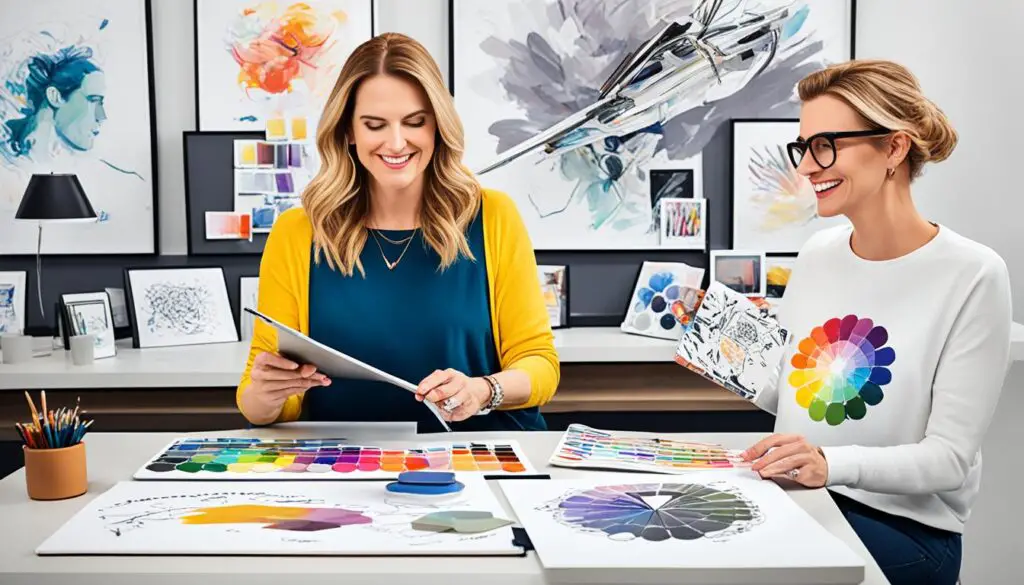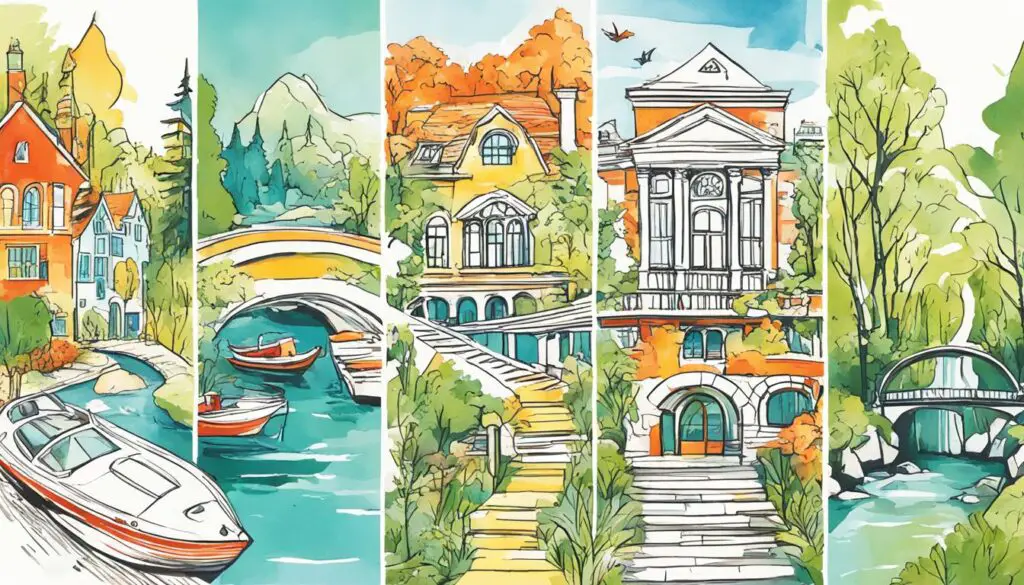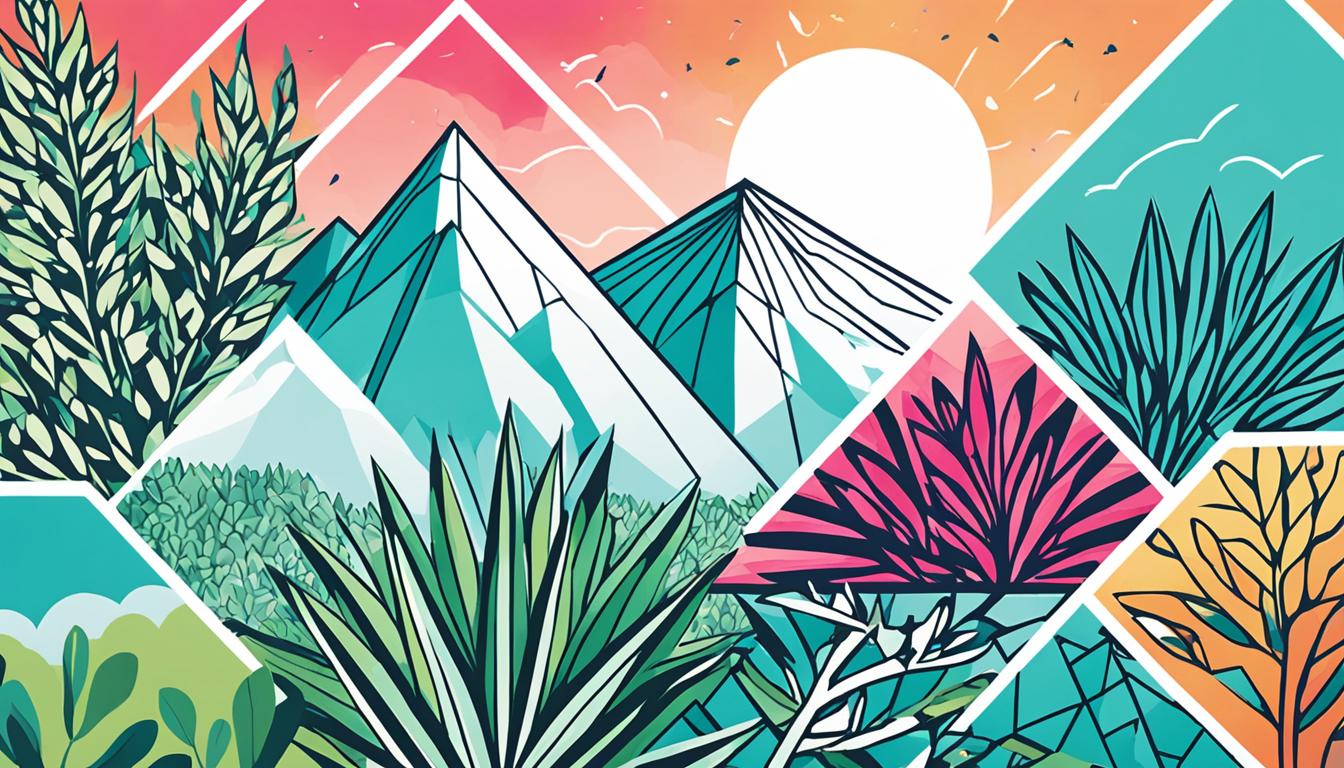Ever thought about making your Midjourney images stand out? The key is in style references. This guide will show you how to use Midjourney’s style reference feature. You’ll learn to boost your creativity and make visuals that grab attention.
Midjourney, a leading AI image generator, has added the “Style References” feature. This lets users set the look of their images. With this tool, you can mix your artistic ideas with AI’s precision. You’ll get images that are top-notch and match your style.
Key Takeaways
- Discover the power of Midjourney’s Style Reference feature to elevate your creative projects
- Learn how to use style references to achieve consistent aesthetics and unique compositions
- Explore the diverse applications of Midjourney style references, from digital marketing to website design
- Uncover advanced techniques like combining style references and adjusting style weight
- Stay ahead of the curve with the latest Midjourney updates and expert insights
Introduction to Midjourney Style Reference
The Midjourney style reference is a new feature that lets users bring their own art style into Midjourney’s AI images. You can pick one or more images to keep the style you want in your new pictures. This way, you save time, get more creative, and make images that look just like you want.
What is a Style Reference?
A style reference in Midjourney is like an image prompt. You give a URL to images that show the style you want for your pictures. This lets you bring your own art style or favorite looks into Midjourney’s AI images, making them look consistent and unique.
Benefits of Using Style References
Midjourney’s style reference has many benefits for both new and skilled users. By using a style reference, you can:
- Make creating art faster by easily keeping a certain look across images
- Keep your AI pictures looking consistent and visually appealing
- Try out different styles to see what works best for you
- Get results that look more like what you imagined
Midjourney’s style reference lets you take your image making to the next level. Whether you want to copy your own style or capture a certain look, this feature helps you do just that.
How to Use Midjourney Style Reference
Using the Midjourney Style Reference is easy. Just add the --sref parameter and the image URL after your text prompt. If you have more images, list their URLs one after another, separated by a space.
Adjusting Style Weight (–sw)
The Style Weight, or --sw, is key. It changes how much the style affects the image, from 0 to 1000, with 100 as the default. By tweaking the --sw parameter, you can balance the text and style perfectly.
For instance, to make an image like a famous painting, use the --sref parameter for the painting. Then, adjust the --sw to control how much the painting’s style shows in the final image.
The -c parameter also helps, changing the style’s chaos level from 0 to 100. This lets you play with the image’s variation and surprise.
Try different settings for --sref, --sw, and -c to get the look you want for your images.

Mastering Midjourney Style Reference opens up new creative doors. It lets you make your image prompts come to life with more precision and style.
Midjourney Style Reference Examples
Photographic Style References
Photographic style references in Midjourney help create images with a professional look. They blend details like clothes, props, and accessories smoothly into the images. But, these images might look too perfect and not like real life.
Abstract and Technical Style References
Using “technical” styles, like colors or abstract images, can lead to unique Midjourney creations. Midjourney’s v2 style reference feature for version 6 lets you adjust the style weight from 0 to 1000. This feature is available in Discord and the Web Alpha platform.
The Style Reference (SREF) feature by Midjourney copies a style training LoRA and makes images in a certain style from one image. It helps users make images consistently with just one image, and it works with V6 and Niji V6 models. Users can use many images at once and set style weights for more control. You can change the total style strength (default 100, off at 0, max at 1000) with the –sw command.
| Photographic Style References | Abstract and Technical Style References |
|---|---|
|
|

Combining Image Prompts and Style References
Creating stunning images with Midjourney gets a boost when you mix Midjourney image prompts and style references. This combo opens up a world of creative ideas. Image Prompts shape your image’s look, while Style References add a unique style. You can pick one or more images to set the look of your pictures, making them match the style you want.
By blending Image Prompts and Style References, your images become more than just pretty. They gain a unique personality and style. You can copy an image’s setup, subject, and style, then add your own look. This mix lets you try out different styles and setups to get the look you want.
Using both Image Prompts and Style References requires a careful balance. The way they work together affects the final image. By trying out different mixes and adjusting the image weights, you can create stunning and unique pictures. This approach lets you go beyond traditional image making, bringing your artistic vision to life with Midjourney.
Keep exploring Midjourney image prompts and style references to see what you can do. The journey of combining these tools is about trying new things, discovering, and growing. By using them together, you can open up new ways to make images, taking your art to new heights with Midjourney.
Midjourney Style Reference Tips and Tricks
Using Midjourney’s style reference feature opens up a world of creative possibilities. You can mix and match different images to create unique styles. This lets you combine contrasting images to make something new and interesting.
Using Multiple Style References
Midjourney lets artists use multiple URLs for more advanced stylization. This means you can make your art richer and more diverse. Adding style references with text makes your art even more powerful.
Experimenting with Style Versions (–sv)
Adjust the style with style weight and style version. The –sv option lets you try different style versions. A new feature, “–sref random,” was added on April 27, 2024. It gives you a random style reference number to use later.
Getting good at Midjourney’s style feature means trying different things. Mix styles, change settings, and see what you can create.
| Parameter | Description |
|---|---|
| –sw | The default style weight in Midjourney is 100. You can change it to fine-tune the style’s effect. |
| –sref | You can combine many style references in Midjourney for unique looks. Each image gets the same weight by default. You can change this by adding a number after each URL. |
| –sv | The –sv option lets you try different style versions to find the right look for your art. |
| –sref random | “–sref random” was added on April 27, 2024. It gives you a random style reference to use again later. |
Mastering these Midjourney style reference tips and tricks opens up a world of creativity. Experiment, explore, and let your imagination run wild!
Conclusion
Midjourney’s “Style Reference” feature is a big leap forward for creators. It lets them make their AI images look just right and bring their ideas to life. This tool helps users keep their creative projects looking consistent and eye-catching.
With Midjourney, you can tweak the style and make it stronger or mix different styles together. Artists can blend style references with their image prompts for a look that’s both unified and striking. Check out the example to see how it works.
Midjourney keeps getting better, adding new styles and improving the “Style Reference” feature thanks to feedback from the community. With Midjourney’s “Style Reference,” your creativity knows no bounds. Let your imagination run wild and make AI images that amaze and inspire.

